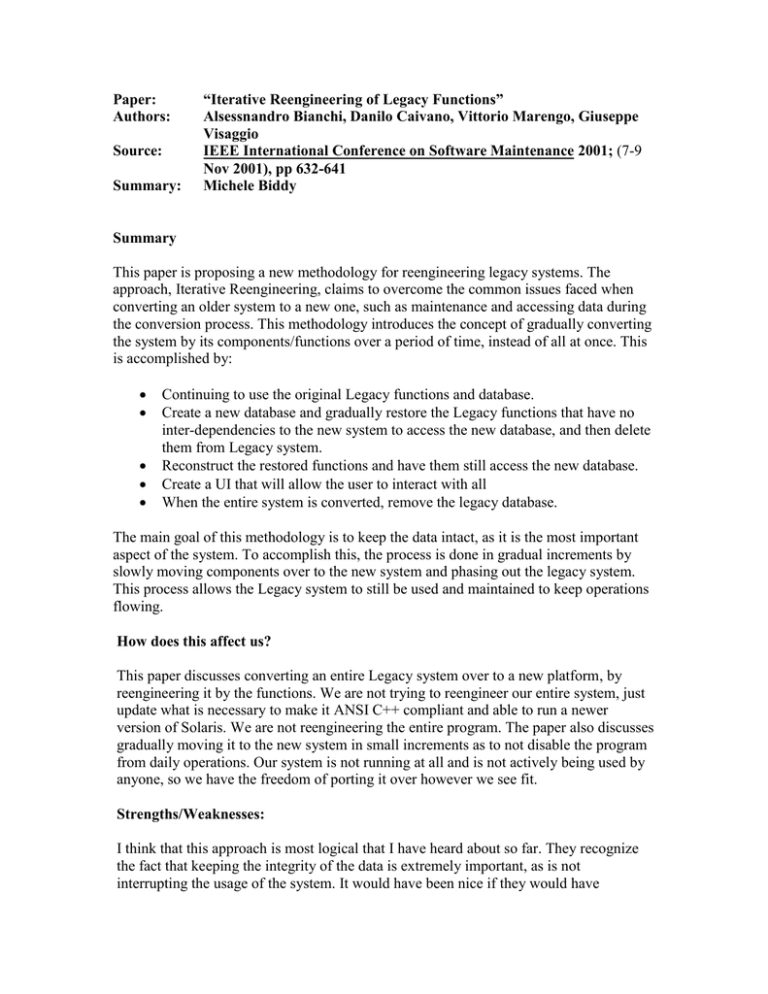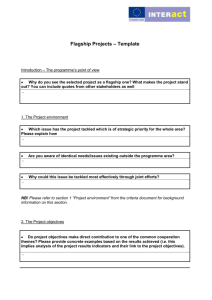“Iterative Reengineering of Legacy Functions” Paper: Authors:
advertisement

Paper: Authors: Source: Summary: “Iterative Reengineering of Legacy Functions” Alsessnandro Bianchi, Danilo Caivano, Vittorio Marengo, Giuseppe Visaggio IEEE International Conference on Software Maintenance 2001; (7-9 Nov 2001), pp 632-641 Michele Biddy Summary This paper is proposing a new methodology for reengineering legacy systems. The approach, Iterative Reengineering, claims to overcome the common issues faced when converting an older system to a new one, such as maintenance and accessing data during the conversion process. This methodology introduces the concept of gradually converting the system by its components/functions over a period of time, instead of all at once. This is accomplished by: Continuing to use the original Legacy functions and database. Create a new database and gradually restore the Legacy functions that have no inter-dependencies to the new system to access the new database, and then delete them from Legacy system. Reconstruct the restored functions and have them still access the new database. Create a UI that will allow the user to interact with all When the entire system is converted, remove the legacy database. The main goal of this methodology is to keep the data intact, as it is the most important aspect of the system. To accomplish this, the process is done in gradual increments by slowly moving components over to the new system and phasing out the legacy system. This process allows the Legacy system to still be used and maintained to keep operations flowing. How does this affect us? This paper discusses converting an entire Legacy system over to a new platform, by reengineering it by the functions. We are not trying to reengineer our entire system, just update what is necessary to make it ANSI C++ compliant and able to run a newer version of Solaris. We are not reengineering the entire program. The paper also discusses gradually moving it to the new system in small increments as to not disable the program from daily operations. Our system is not running at all and is not actively being used by anyone, so we have the freedom of porting it over however we see fit. Strengths/Weaknesses: I think that this approach is most logical that I have heard about so far. They recognize the fact that keeping the integrity of the data is extremely important, as is not interrupting the usage of the system. It would have been nice if they would have considered using their methodology on smaller systems, or ones that had minimal conversion or corrections to be made. Not all upgrades need to be done on entire systems and it would be nice to see different approaches on just making minimal upgrades.

